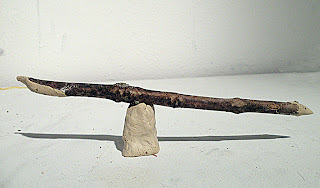“Fitzcarraldo Overtime” by Suzanne Goldenberg
Presented by Gallery Molly Krom
Location: Main Floor
This installation continues Goldenberg’s ongoing dialogue with refuse and waste—the residue of overproduction and constant consumption. Goldenberg’s sustained engagement with found materials adds a temporal dimension to this now familiar aesthetic of minimalism, producing a conceptual density that is neither affected nor didactic. Suzanne Goldenberg received a B.A. in Film Studies from McGill University and an M.F.A from the Maryland Institute... read more
This installation continues Goldenberg’s ongoing dialogue with refuse and waste—the residue of overproduction and constant consumption. Goldenberg’s sustained engagement with found materials adds a temporal dimension to this now familiar aesthetic of minimalism, producing a conceptual density that is neither affected nor didactic. Suzanne Goldenberg received a B.A. in Film Studies from McGill University and an M.F.A from the Maryland Institute... read more

















































